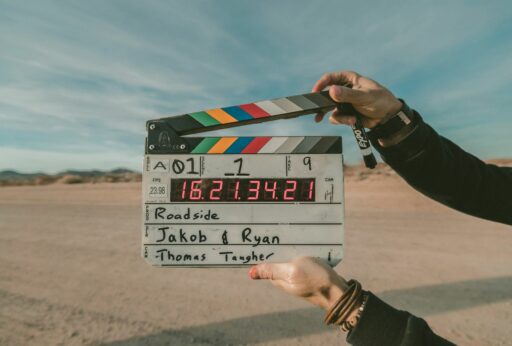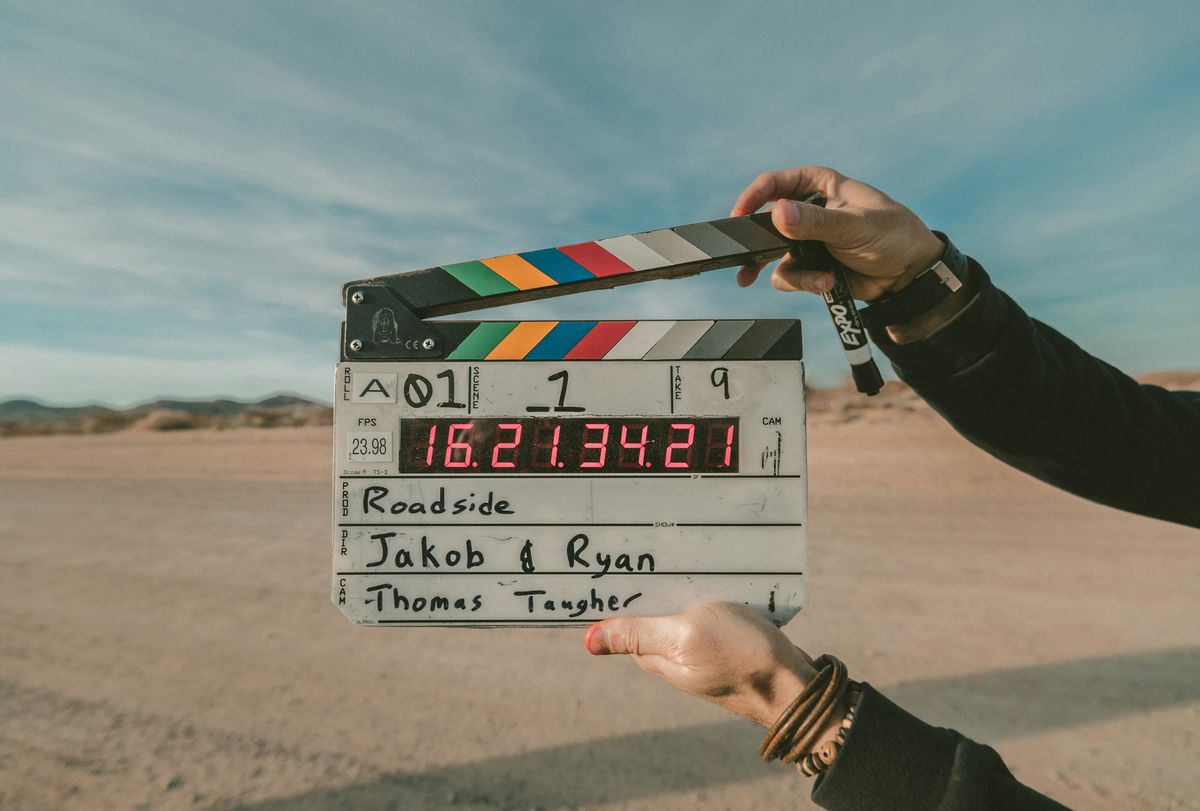Quentin Tarantino’s films are a showcase of bold storytelling and stylistic flourishes that have left an indelible mark on modern cinema. With a career that spans over three decades, Tarantino has crafted a signature cinematic language that is instantly recognizable. His films blend a mix of non-linear storytelling, extended dialogue, stylized violence, and dark humor, all while paying homage to the genres and movies that have influenced him. From the blood-soaked scenes to the infamous shots of feet, Tarantino’s work is both a love letter to cinema and a reflection of his unique vision as a filmmaker.
Key Takeaways
- Tarantino’s storytelling is characterized by non-linear narratives and time manipulation, creating a unique and engaging cinematic experience.
- His films are known for their extended dialogue scenes and memorable monologues, which have become a hallmark of his directorial style.
- Violence and dark humor are used in tandem to create a distinctive tone that balances intensity with levity, often within the same scene.
- Tarantino’s visual style includes the use of wide shots and meticulous cinematography, as well as a recurring motif of featuring feet prominently in the frame.
- Beyond his distinct style, Tarantino’s legacy includes influencing aspiring filmmakers and leaving a lasting impact on the film industry through his innovative and genre-defying work.
Signature Elements of Tarantino’s Storytelling


Non-Linear Narratives and Time Manipulation
Quentin Tarantino’s films are renowned for their non-linear narratives and time manipulation, which challenge traditional storytelling methods. Instead of following a chronological order, Tarantino often presents his stories out of sequence, compelling the audience to piece together the plot like a puzzle.
- Pulp Fiction weaves together multiple storylines in a non-linear fashion.
- Kill Bill unfolds through a series of flashbacks.
- Reservoir Dogs reveals character backstories in a non-chronological order.
This technique not only adds complexity and depth to the narrative but also enhances rewatchability, as viewers may discover new connections with each viewing. Tarantino’s approach to storytelling has influenced many filmmakers, encouraging them to experiment with their narrative structures.
Tarantino’s mastery of narrative structure is not just a stylistic choice but a way to engage viewers on a deeper level, making them active participants in the storytelling process.
Stretched-Out Dialogues and Memorable Monologues
Quentin Tarantino’s films are renowned for their stretched-out dialogues and memorable monologues, which serve as more than just character development tools; they are a form of art in themselves. The dialogue often reveals the philosophy and confidence-level of each character, making them distinct and memorable.
- The dialogue is a course in character exploration.
- It’s a callback to the car, and it humanizes everyone in the room.
- The stakes are life and death when we see everyone as human.
Tarantino’s dialogue is not just about what is said, but the silences in between. It’s about cutting back until the words left unsaid speak the loudest.
Learning from the best, Tarantino’s dialogue often reflects a deep understanding of the characters’ psyches, allowing the audience to connect on a more intimate level. His use of dialogue varies from the expositional to the stylistic, always serving the narrative and enhancing the cinematic experience.
Violence and Dark Humor: A Balancing Act
Quentin Tarantino’s films are renowned for their bold artistic choice of integrating violence into the narrative fabric. This integration is not merely for shock value; it serves a purpose, often reflecting the story’s themes or the characters’ inner turmoil. The amount of violence is carefully calibrated to the story being told, ensuring that it complements rather than overwhelms the narrative.
- Tarantino’s violence is meticulous and deliberate.
- It elicits a wide range of reactions from audiences.
- The violence is balanced with moments of levity and dark humor.
Tarantino masterfully weaves dark humor into the tapestry of his films, creating a unique tone that can lighten an otherwise moody atmosphere.
The interplay between violence and humor is a delicate dance that Tarantino performs with grace. Scenes of intense action are often punctuated with witty dialogue or absurd situations, providing a counterbalance that keeps viewers engaged and entertained. This juxtaposition is a signature element of Tarantino’s storytelling, one that has contributed to his enduring legacy in cinema.
Visual and Aesthetic Choices in Tarantino’s Films


The Role of Wide Shots and Cinematography
Quentin Tarantino’s films are renowned for their distinctive visual style, which is in part defined by the use of wide shots that capture the grandeur of the scene and the intricate details within it. The expansive frames not only establish the setting but also allow the audience to immerse themselves in Tarantino’s meticulously crafted worlds.
The collaboration with cinematographers, particularly Robert Richardson, has been pivotal in achieving this aesthetic. Richardson’s choices in film stock and colorization have played a significant role in films like Once Upon a Time…in Hollywood, where the era’s divisive approaches to film and television production were artistically captured.
The wide shots are not mere visual choices; they are narrative tools that enhance the storytelling, providing a canvas for Tarantino’s rich characterizations and complex scenes.
The table below outlines the impact of wide shots on various aspects of Tarantino’s films:
| Aspect | Impact of Wide Shots |
|---|---|
| Setting Establishment | Conveys the scale and context of the scene. |
| Character Placement | Highlights relationships and power dynamics. |
| Visual Storytelling | Enhances narrative through visual cues. |
| Audience Experience | Promotes immersion and emotional connection. |
In summary, Tarantino’s use of wide shots is a testament to his ability to blend cinematic techniques with storytelling prowess, creating an unforgettable visual language that has become a hallmark of his films.
Iconic Use of Blood and Violence
Quentin Tarantino’s films are synonymous with their bold and unapologetic use of blood and violence. This visceral approach has become a hallmark of his cinematic style, often serving as a cathartic element within the narrative. The director’s commitment to this aesthetic is such that he consistently finds ways to integrate violence into his stories, regardless of genre.
While Tarantino’s films are replete with bloodshed, there is a notable exception in his portrayal of violence. The One Type of Violence You’ll Never See in a Quentin Tarantino film is violence towards animals, a line the director refuses to cross. This conscious choice underscores Tarantino’s selective use of violence as a storytelling device, rather than gratuitous shock value.
Tarantino’s epic kills are not just about the act of violence itself, but also about the context and creativity behind them. From the shocking to the stylistically over-the-top, these moments are crafted to leave a lasting impression on the audience.
The following list highlights some of the most memorable and epic kills in Tarantino’s filmography:
- The Bride’s vengeful rampage in Kill Bill
- The explosive finale in Inglourious Basterds
- The tension-filled standoff in Reservoir Dogs
- The climactic shootout in Django Unchained
Each of these scenes exemplifies Tarantino’s ability to blend storytelling with his signature visual flair, creating moments that are both narratively significant and visually arresting.
Recurring Motifs: Feet in Frame
Quentin Tarantino’s penchant for featuring feet prominently in his films has become one of his most talked-about trademarks. This peculiar focus on feet, particularly women’s feet, has sparked much debate and speculation about a possible foot fetish. However, the director himself has not confirmed such theories, leaving it as an intriguing aspect of his cinematic style.
The inclusion of feet in his movies often serves no direct narrative purpose, but rather seems to be a personal stamp of the filmmaker. It’s a detail that fans and critics alike have come to expect and look for in each new Tarantino release. Here’s a brief rundown of Tarantino films where this motif is evident:
- Pulp Fiction (1994): Uma Thurman’s barefoot dance scene.
- Kill Bill: Volume 1 (2003): The close-up of Uma Thurman’s feet as she tries to wiggle her big toe.
- Death Proof (2007): Sydney Tamiia Poitier’s feet resting on the car dashboard.
- Inglourious Basterds (2009): Melanie Laurent’s bare feet featured prominently in several scenes.
- Once Upon a Time in Hollywood (2019): Margot Robbie’s feet up against the movie theater seat.
While some may view this recurring motif as a quirky eccentricity, others argue it adds a layer of authenticity and personal touch to Tarantino’s storytelling. Regardless of the interpretation, it’s clear that Tarantino’s films would not be quite the same without this distinctive element.
Tarantino’s Influence and Homages to Cinema


Grindhouse and Genre Films: A Love Letter
Quentin Tarantino’s adoration for grindhouse and genre films is evident in his cinematic oeuvre, which often serves as a homage to these styles. His films are a pastiche of the genres he grew up with, blending elements from blaxploitation, martial arts, and spaghetti westerns to create a unique and recognizable aesthetic.
Tarantino’s approach to genre films is not just imitation but a reimagining that pays tribute while adding his own innovative twist.
The following list highlights some of the genre influences that Tarantino has woven into his films:
- Blaxploitation films
- Martial arts movies
- Spaghetti Westerns
- Slasher films
- Film noir
These influences are more than mere references; they are integral to the fabric of Tarantino’s storytelling, shaping the narratives and characters that have captivated audiences worldwide.
Pop Culture and Historical References
Quentin Tarantino’s films are a treasure trove of pop culture and historical references, creating a rich tapestry that resonates with audiences. These references are not just mere name-drops; they serve to deepen the narrative and connect with viewers on multiple levels. For instance, a character’s affinity for a certain genre or movie can offer insights into their personality and background, enhancing character development.
The use of pastiche in Tarantino’s work allows for an inter-textual play that enriches the viewing experience. It’s a nod to the knowledgeable viewer, creating an ‘in-the-know’ feeling that fosters a deeper engagement with the film. This technique is evident in various forms, from the homage to grindhouse cinema in Death Proof to the playful nods to classic films like Indiana Jones.
- Inter-textual Play: Creates a dialogue with other texts.
- Audience Engagement: Offers an ‘in-the-know’ feeling.
- Character Development: Provides insights into personalities.
- Educational or Satirical Purposes: Educates or satirizes film tropes.
Tarantino’s approach to referencing is not just about paying tribute; it’s about weaving a complex narrative that acknowledges and celebrates the rich history of cinema.
The Tarantino Universe: Interconnected Characters and Stories
Quentin Tarantino’s films are renowned for their unique interconnectedness, with characters and stories that weave through various narratives, creating a rich tapestry of a shared universe. This approach not only enriches each film but also rewards attentive viewers with a sense of discovery and continuity.
Tarantino’s universe is a complex web, where minor characters in one story may become the focal point in another, and background details often hold significant meaning.
For instance, the character of Sheriff Earl McGraw, played by Michael Parks, appears in both ‘From Dusk Till Dawn’ and ‘Kill Bill’, while Vincent Vega from ‘Pulp Fiction’ and Vic Vega from ‘Reservoir Dogs’ are brothers, hinting at a larger world beyond the immediate story. Here’s a brief list of some interconnected elements across Tarantino’s filmography:
- Red Apple cigarettes, a fictional brand, appear in multiple films.
- Big Kahuna Burger, a fictional fast-food chain, is featured in several movies.
- The Vega brothers, as mentioned, connect ‘Pulp Fiction’ and ‘Reservoir Dogs’.
- The ‘Crazy 88’ fight scene in ‘Kill Bill’ includes a character who is the daughter of a victim from ‘Pulp Fiction’.
These subtle threads not only create a sense of continuity but also invite fans to explore and theorize about the relationships between different narratives, further cementing Tarantino’s legacy as a master storyteller.
The Director’s Craft: Tarantino’s Approach to Filmmaking


Writing and Directing: A Dual Mastery
Quentin Tarantino’s approach to filmmaking is a testament to his dual mastery of writing and directing. His films are distinguished by a unique voice and vision, a result of his deep involvement in both the creation of the script and the execution on set. Tarantino’s ability to craft intricate narratives and direct with precision allows him to create a seamless blend of story and visual style.
- Tarantino emphasizes the importance of a genuine vision in filmmaking.
- He finds inspiration in personal experiences, ensuring authenticity.
- Staying true to one’s voice is crucial for impactful storytelling.
Tarantino’s dedication to his craft is evident in the meticulous attention to detail in both his writing and directing. His films are not just told; they are meticulously sculpted, with each line of dialogue and camera angle serving a purpose in the larger narrative tapestry.
The synergy between Tarantino’s writing and directing is what makes his films resonate with audiences. It’s a balance of sharp dialogue, memorable characters, and striking visuals, all woven together by a filmmaker who understands the power of cinema.
Creating Harmonious Sets: Tarantino’s Unique Practices
Quentin Tarantino’s approach to fostering a harmonious environment on set is as distinctive as his cinematic style. One of his notable practices is the ‘no electronics’ rule, aimed at maintaining focus and encouraging personal interaction among the cast and crew. This rule is just one aspect of a broader philosophy that prioritizes the human element of filmmaking.
Beyond banning electronics, Tarantino’s sets are known for their unique atmosphere. The director’s commitment to his vision extends to the environment in which his films are made, often described as a blend of professionalism and a family-like camaraderie. This approach not only enhances the working experience but also translates into the chemistry seen on screen.
- No electronics on set
- Emphasis on personal interaction
- Professional yet familial atmosphere
- Enhanced on-screen chemistry
Tarantino’s methods create a space where creativity and collaboration thrive, setting the stage for the memorable performances and dynamic storytelling that define his films.
The Evolution of Tarantino’s Cinematic Style
Quentin Tarantino’s journey as a filmmaker reveals a dynamic evolution, marked by his unwavering commitment to a distinctive narrative and visual style. His ability to adapt and innovate within his own framework has kept his work fresh and relevant. From the raw energy of ‘Reservoir Dogs’ to the polished grandeur of ‘Once Upon a Time in Hollywood’, Tarantino’s growth is evident.
The hallmark features of his films, such as non-linear storytelling and the iconic use of violence, have been honed over the years. Yet, Tarantino continues to surprise audiences with new elements and techniques. For instance, his later works show a more refined approach to character development and pacing, without losing the edge that defines his films.
- Early Career: Raw and Gritty
- Mid-Career: Stylized and Bold
- Current Works: Matured and Nuanced
Tarantino’s films are not just about the shock value or the visual flair; they are a testament to his deep understanding of the art of cinema and his ability to continually reinvent himself while staying true to his roots.
Quentin Tarantino’s Legacy and Impact on Modern Cinema


Defining Moments in Tarantino’s Career
Quentin Tarantino’s career is a tapestry of bold and defining moments that have shaped modern cinema. His breakout film, ‘Pulp Fiction’, revolutionized the industry in 1994, setting a new standard for narrative structure and dialogue. Following this, Tarantino continued to push boundaries with a series of genre-defining works:
- ‘Reservoir Dogs’ (1992) – The heist film that introduced Tarantino’s knack for non-linear storytelling.
- ‘Kill Bill’ (2003) – A martial arts epic showcasing Tarantino’s love for choreographed violence and visual flair.
- ‘Inglorious Basterds’ (2009) – A war film that blends historical fiction with Tarantino’s signature style.
Each film not only marked an evolution in his directorial approach but also left an indelible impact on audiences and filmmakers alike. The anticipation for a Tarantino release is palpable, with fans eagerly awaiting the unique experience that comes with each new entry in his filmography. The latest buzz around ‘Kill Bill 3‘ is a testament to the lasting appeal of his work, despite the news not being promising.
Tarantino’s influence extends beyond the screen, inspiring a generation of filmmakers to embrace bold storytelling and stylistic choices. His legacy is not just in the films he’s created but in the enthusiasm and anticipation they continue to generate.
The Cult Following of Tarantino’s Work
Quentin Tarantino’s films have garnered a dedicated fan base that transcends typical moviegoer demographics. His unique blend of genre elements, sharp dialogue, and distinctive visual style has cultivated a cult-like following. Fans eagerly anticipate each new release, often engaging in spirited discussions and analyses of his work.
- The ‘Tarantino foot fetish’ has become a quirky topic of conversation among fans.
- Opening nights of Tarantino’s films are events in themselves, with fans flocking to theaters.
- The home video market sees a surge as aficionados add to their collections.
Tarantino’s influence extends beyond the screen, with fans often seeking to emulate his directorial style or incorporate elements of his storytelling into their own creative endeavors.
The loyalty of Tarantino’s audience is reflected in the fervor with which they debate rankings of his films, from the most acclaimed to the less favored. This passion is a testament to the director’s ability to leave a lasting impression on his viewers.
Influence on Aspiring Filmmakers and the Industry
Quentin Tarantino’s distinctive style has left an indelible mark on the film industry, inspiring a generation of filmmakers who see in his work a blueprint for success without the traditional film school route. His films serve as a masterclass in cinema, demonstrating that passion, creativity, and a deep understanding of film history can be just as valuable as formal education.
The influence of Tarantino’s work extends beyond his own films, as his approach to storytelling and visual style has permeated the industry. Aspiring filmmakers often reference Tarantino when discussing their influences, citing his ability to blend genres, craft unique characters, and create memorable scenes.
Tarantino’s impact is not limited to his narrative and aesthetic choices; it also encompasses his attitude towards filmmaking. His success encourages self-taught directors and those who have faced rejection from film schools, proving that there are multiple paths to achieving cinematic greatness.
The following list highlights key aspects of Tarantino’s influence on the industry:
- Encouragement of self-taught and non-traditional paths to filmmaking
- Emphasis on the importance of film history and genre knowledge
- Inspiration for bold narrative structures and character development
- Validation of the significance of a director’s unique vision and style
These elements collectively contribute to the shaping of new voices in cinema, who carry forward the legacy of innovation and defiance of conventions that Tarantino epitomizes.
Conclusion
Quentin Tarantino’s cinematic journey is a testament to his unwavering dedication to a unique style that blends violence, dark humor, and non-linear storytelling. His films, from the groundbreaking ‘Pulp Fiction’ to the nostalgic ‘Once Upon a Time in Hollywood’, have left an indelible mark on the landscape of modern cinema. Tarantino’s ability to pay homage to the genres that inspire him while injecting his own innovative flair has earned him a legion of fans and a place among the most influential filmmakers of our time. As we reflect on his illustrious career and the unforgettable moments he has crafted on screen, it is clear that Tarantino’s legacy will continue to inspire and entertain audiences for generations to come.
Frequently Asked Questions
What are the signature elements of Quentin Tarantino’s storytelling?
Tarantino’s signature storytelling elements include non-linear narratives, time manipulation, stretched-out dialogues, memorable monologues, and a unique blend of violence and dark humor.
How does Tarantino approach violence and humor in his films?
Tarantino is known for his stylized violence and bloodshed, often combined with dark humor to create a balance that keeps the audience engaged and entertained, even in the midst of chaotic or intense scenes.
What are some visual and aesthetic choices that define Tarantino’s films?
Tarantino’s films are characterized by their use of wide shots, distinctive cinematography, iconic use of blood and violence, and recurring motifs such as the infamous shots of feet.
How does Quentin Tarantino pay homage to cinema in his movies?
Tarantino pays tribute to cinema by incorporating elements of grindhouse and genre films, using pop culture and historical references, and creating interconnected characters and stories within his own cinematic universe.
What practices does Tarantino follow to create harmonious movie sets?
Tarantino reportedly enforces a ‘no electronics’ rule on set and follows other unique practices to maintain a focused and harmonious environment during the filmmaking process.
What is the impact of Quentin Tarantino’s work on modern cinema and aspiring filmmakers?
Tarantino’s distinctive style and success have left a lasting legacy on modern cinema, inspiring a cult following, influencing aspiring filmmakers, and shaping the industry with his innovative approach to filmmaking.





